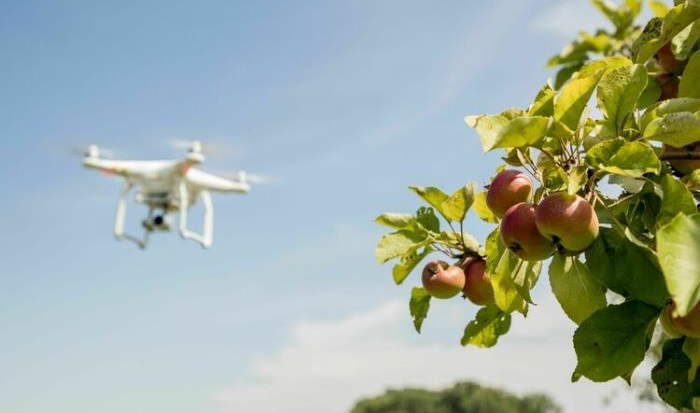In addition to the Audi Environmental Foundation and the Heidelberg University of Education, other contributors to the project include the Countryside Conservation Association for the Karlsruhe District and the Bad Schönborn Task Force for Local Nature and Environment (AHNU). Now the final results are available: Around 20 percent of the stock was found to be in urgent need of care, roughly half needed a lesser amount of care, and 28 percent needed no care. The meadow orchards are comprised of two-thirds apple trees, followed by pears, walnuts, plums, and cherries. This stock will now get the appropriate care, above all through regular pruning. And the benefits will not stop there: Improving the vitality of trees helps the long-term biodiversity of the landscape, safeguarding the habitat of domestic animals and insects.
Multispectral images for evaluating the intensity of photosynthesis
“The big challenge was the huge volume of data that we got back from the drones,” summarizes Alexander Siegmund, Professor of Physical Geography and head of the project team at the Heidelberg University of Education. “They took a picture every two seconds, which added up to about 120,000 images. Creating a valid general picture out of all this data required enormous computing power.” This was all the truer as the drone images were not the only information that had to be processed. Multispectral images taken from the air were also incorporated in the analysis, providing information about the intensity of photosynthesis in the trees. Background: Sick trees perform less photosynthesis and reflect light differently than healthy trees. But the visible structural characteristics of the trees – such as the treetop density, the proportion of deadwood, or the length of new shoots – were also factored into the assessment of the trees’ vitality. As the next step, measures will we derived from this information for the proper care of the trees.
Tree sponsorship via online database
What form will this care take? This is where the environmental education goals, which the project has been pursuing from the outset, come into play: With teaching concepts for schools and publication of the results, the project can raise a lot of awareness about this type of cultural landscape. Now it is encouraging people to get involved: As of immediately, every single citizen in the region can sponsor and care for fruit trees via a specially developed platform. An online mapping service was officially unveiled a short time ago. For anyone interested in the research results, it makes them available in the form of a web-based geographical information system (WebGIS) that also allows people to engage interactively with the content. Furthermore, landscape conservation institutions and government bodies can use the database.

























